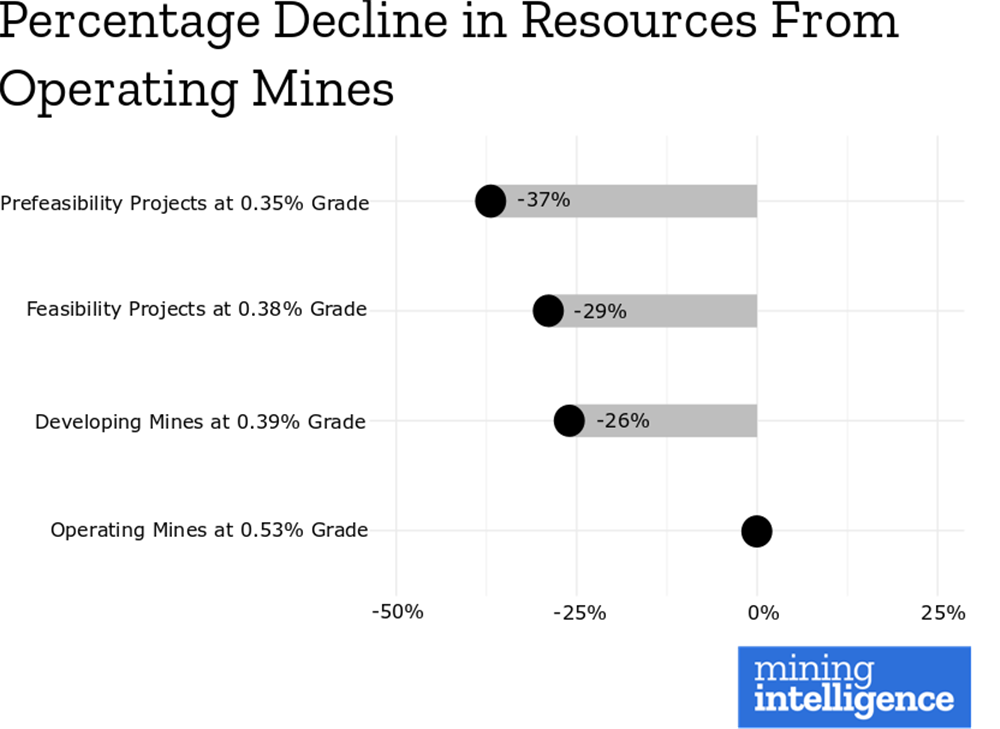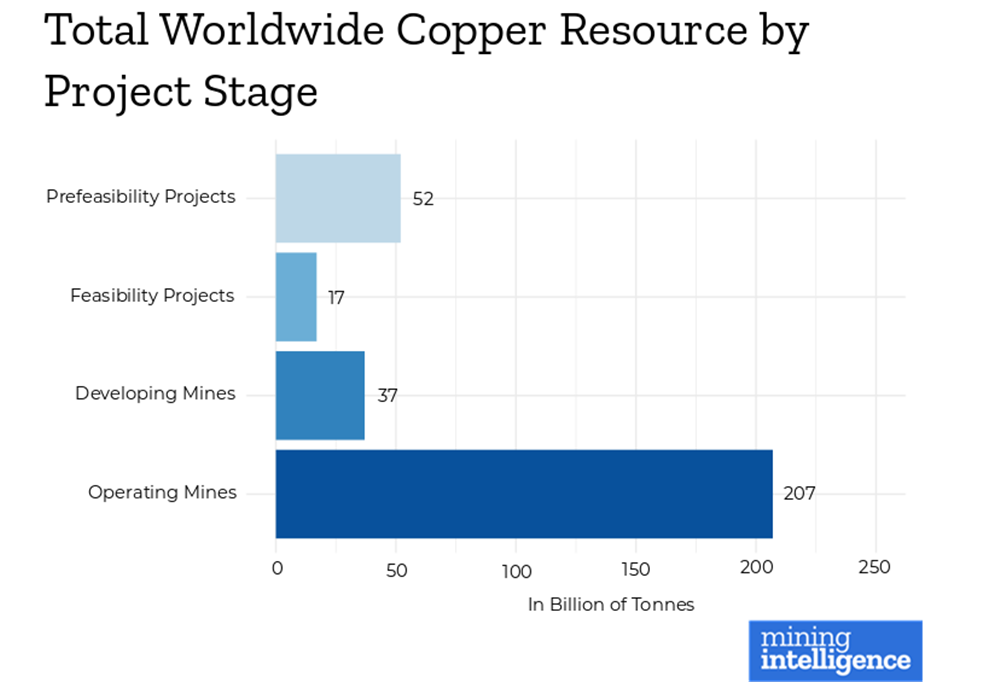Early stage copper projects have grades one-third below operating mines
The next generation of copper mines will not only have less copper but sharply declining grades, according to a study by Mining Intelligence.
Operating mines currently have an average grade of 0.53% while copper projects under development have an average grade of 0.39%.
The estimated total resource of copper projects in the pipeline are 106B tonnes, half the current resource total of existing mines.
Jennifer Leinart, Mining Intelligence analyst and vice president of CostMine, warns that copper prices will rise.
"Miners are struggling with both lower grades and increasing operating costs," says Jennifer Leinart, Mining Intelligence analyst and vice president of CostMine.
"Lower grades mean moving more rocks which in turn will require more diesel fuel and explosives, making the metal more expensive to produce."
Jennifer estimates that fuel, lubricants and explosives can make up 25% of operating costs, based on today's prices and using a 40,000 tonne per day open pit copper mine as an example.
"Existing mines have been labouring under cost inflation," says Leinart.
"In 2007 the average operating cost per tonne of copper ore was $14. In 2017 it was $21."
Copper demand is not expected to slow in the medium-term. The world's number two miner, Rio Tinto, says cost inflation and resource nationalism will continue to put pressure on mining costs.
Sign up for Mining Intelligence and get rich insights about miners, juniors and projects. Our online tool puts rich data at your fingertips.
Creative commons image of copper mushrooms by Tony Hisgett


